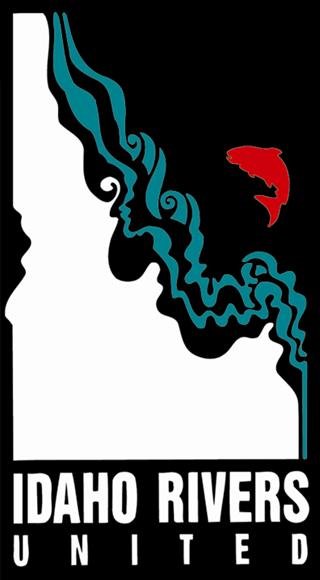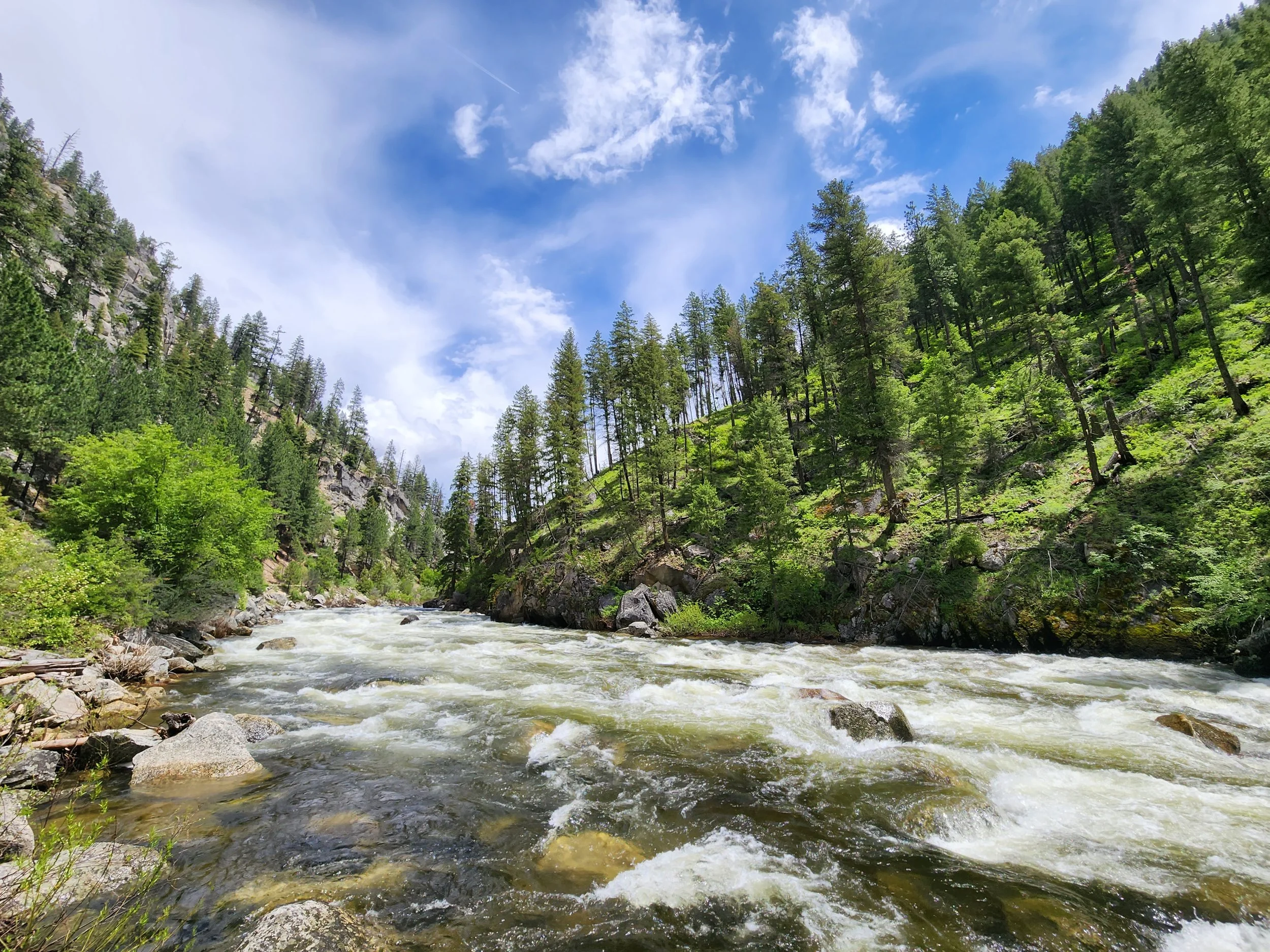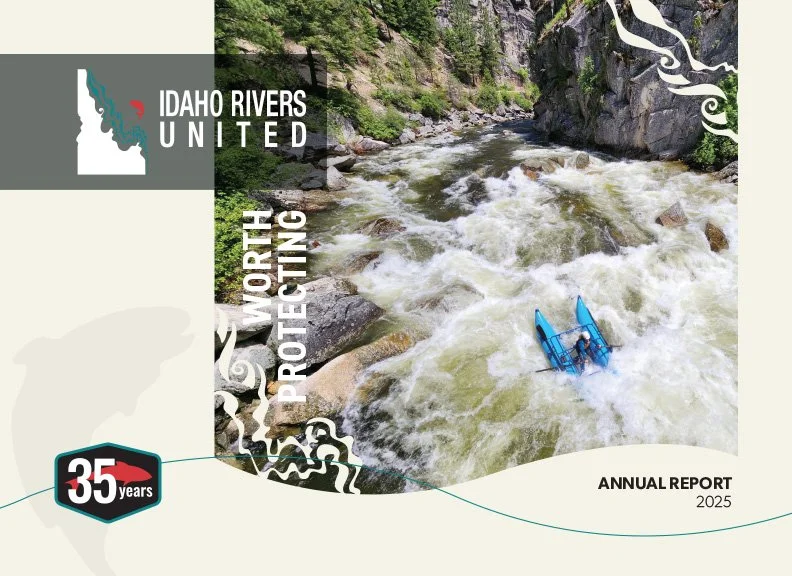IRU’s 2025 Annual Report
IRU is excited to share our 2025 Annual Report. We are extremely proud of all the work we have been able to accomplish with your help and support. This Report highlights the powers of collaboration, tenacity, and dedication to doing what is right. It tells the story of 2025 at IRU, but there is much more to learn. Below you will find expanded articles with more content and context. Thank you for your part in protecting Idaho’s rivers.
If this work is important to you, please consider supporting our mission by donating to IRU.
Further Reading from the 2025 Annual Report
-
Public lands represent the heart and soul of Americans; at their best, they are wild, free, natural, and open to all. Rivers are the arteries coursing through these lands and are vital to the health of the environment. When we recreate outside, Idahoans almost invariably find our destination to be near a river, probably on public lands. These spaces embody freedom for those who hunt, fish, boat, camp, and hike. But last spring, our heritage faced its most existential threat when an attempt to sell off hundreds of thousands of public land acreage was inserted into the government reconciliation bill.
Although people and organizations across the country recognized the threat, most believed that social media blasts and emails would be sufficient to take this amendment down. At IRU, however, we recognized more was necessary to force four Republican Senators to break ranks. So we partnered with Conservation Voters for Idaho to phone bank, combining their technical expertise with our enthusiastic reservoir of volunteers. Together, we flooded the voicemails of Idaho Senators Crapo and Risch with demands to vote ‘NO’ on the amendment. Hundreds of calls were made to their D.C. and Idaho offices—and it worked. Twenty-four hours after our juggernaut of phone calls, Sens. Crapo and Risch came out publicly in support of public lands. After the Montana Senate delegation joined them, we knew we had won, and we knew our small but mighty army was instrumental in securing a major win for public lands. The amendment was dropped from the bill.
This is the power of thoughtful, targeted action. Our work, and your considerable efforts, protected our public lands from greed and development. Idaho’s outdoor recreation generates $7.8 billion to the economy annually and creates 78,000 jobs. To threaten to auction off our birthright, as well as our economic lifeblood, is a bridge too far. We stood up, and we were heard.
Unfortunately, but predictably, the struggle continues. The recent rollback of the Roadless Rule is merely the latest attempt to sell public lands to private interests who only speak in dollar signs. Idaho Rivers United will continue to work to preserve our lands and our rivers. They are not luxuries; they form our identity. We depend on them. And when the next threat—and then the next threat—emerges, we know we can depend on you. Thank you for standing with us.
-
This year Idaho Rivers United continued to stand up for our rivers by advocating for responsible mining practices as our nation seeks to increase domestic mineral production. Responsible mining means recognizing that some places are simply too important to risk, and that the health of our waters must be prioritized.
When the U.S. Forest Service approved the Stibnite Gold Project, IRU quickly took action. Working with our partners, we still continue to challenge the project’s approval and related permits to make sure its true impacts are brought to light and that meaningful protections are put in place. Because of this work, agencies have been required to revisit and strengthen their reviews to address significant gaps.
Beyond Stibnite, the Forest Service has approved the CuMo Exploration Project in the headwaters of the Boise River, which is the first step towards the company’s long-term goal of turning the area into one of the largest open-pit mines in the world. IRU spent the summer educating hundreds of Idahoans, from policymakers to students, about the potential impacts from this enormous operation only 38 miles northeast of Boise. The CuMo project is a powerful opportunity to bring people together from different walks of life to protect the Boise River watershed and the communities that depend on it.
Farther east, in the foothills of the Centennial Mountains, IRU continues our work with the Clean Kilgore Coalition to prevent the Kilgore Gold Exploration Project from advancing into an open-pit gold mine. Our coalition has partnered with a graduate program at BYU–Idaho to conduct groundwater testing in the area—data that will help us understand and communicate the risks of mining above streams that feed the Eastern Snake River Plain Aquifer. These collaborative, science-based efforts are sparking community engagement and driving decisions about Idaho’s future to be guided by facts and shared values.
While challenges remain, we’re entering 2026 with renewed momentum and a growing community of river defenders across the state. IRU will continue to push for responsible mining practices and ensure that Idaho’s rivers flow freely and cleanly into the future.
-
Under the Resilient Columbia Basin Agreement (RCBA) of 2023, the federal government had outlined hundreds of thousands of dollars and agency resources to not only study replacement services for the four Lower Snake River Dams (LSRDs), but also to work with Tribes and States on clean energy and infrastructure development and native fish recovery across the Columbia Basin. Unfortunately, in June the Trump Administration abruptly withdrew from this agreement, which had initially come about due to a pause in the long-running salmon litigation that IRU has been involved with for decades.
In the wake of this significant setback on a durable pathway towards LSRD removal and salmon recovery in Idaho, we have continued our salmon advocacy work via public engagement and conversations with elected officials and stakeholders across the region. IRU has grown relationships with Tribal Nations, whose tireless direction and leadership on salmon recovery sustains momentum in the region towards meaningful change.
This fall, after the collapse of a pathway towards recovery for salmon and steelhead, we re-entered litigation over how the system of dams and reservoirs is managed in relation to salmon survival. In early 2026, we hope the court will accept the terms of the emergency injunction filed by IRU and partners, which aims to force “hydrosystem” managers to change operations on the river for the near-term benefit of the deeply imperiled salmon runs.
We also continue to look at the opportunities surrounding this issue in new ways, including an ongoing study that will highlight the economic benefits of dam removal and service replacement to communities along the river corridor, such as the Lewiston-Clarkston valley.
The end of the RCBA has jeopardized regional salmon recovery, but this has only strengthened the resolve of IRU staff and our regional partners. We will continue as always to advocate for dam removal and regional investment in healthy rivers in order to recover our salmon runs and river communities.
-
Where would any of us be if we were on our own, without the support and strength that come from true partnerships? The beauty of a community lies in the utilization of the unique and powerful skill sets that each individual contributes. The same is true for organizations.
While we are incredibly proud of the work that we do at Idaho Rivers United, we would not be where we are today without our community of conservation organizations dedicated to defending the environment. We may all have different missions, approaches, and specialties related to our work, but when we come together, these differences complement one another and create meaningful coalitions.
The importance of partnership is nothing new for organizations like IRU. Still, the intensity and volume of threats over this past year may be the perfect example of why these collaborations are so vital to our work.
To name just a few: we teamed up with Conservation Voters for Idaho to rally Idahoans to stand up and defend the threats to our public lands; we worked with our longtime coalition partners and the legal experts at Advocates For the West to continue to fight the Stibnite Mine; and we continued to work with our Tribal partners to ensure salmon and steelhead are rightfully returned to a sustainable abundance. This year has shown that the threats to our rivers, lands, and wildlife are not going away. The path to success in our collective goals crystallizes around a simple idea—problems become less challenging when we work together.
This idea of partnership also extends beyond our work with other organizations. By reading this and supporting IRU, you enable us to show up every day and defend the rivers and fisheries of Idaho. Without your encouragement and continued contributions, we would not be where we are today.
This year marks 35 years since Idaho Rivers United was founded. While some faces and partnerships may have changed, we know more are yet to blossom. I speak for the entire staff at IRU when I say that we are proud and honored to do the work that we do every day. Our ‘whys’ may differ amongst ourselves and even among our supporters and partners, but we all share the common responsibility and recognition of how important and vulnerable our environment truly is. We thank you for your support and look forward to forging new relationships and strengthening old ones as we move forward with this vital work together.
-
IRU’s 2025 volunteer and river stewardship programs exemplifies the fact that to protect Idaho’s rivers, you don’t need to have an extraordinary background, you just need the heart and passion to make a difference!
This year, our volunteer programs saw a 27% increase in participation with 476 individuals from our local community dedicating over 2500 hours to protect and restore Idaho’s rivers and fisheries. Through our programs volunteers helped remove 3850 lbs of trash from the Boise River, spent 18 hours phone canvassing for Idaho’s public lands, and contributed 448 hours to broadened our outreach by supporting IRU events, assisting with tabling opportunities, and leading educational presentations for the community.
IRU is focusing on providing opportunities for our volunteers to become strong community leaders – not only is this essential for the growth of our programs, but it gives our volunteers a chance to develop and enhance these skills. In 2025, we expanded our leadership opportunities in both our Adopt-the-Greenbelt and Urban River Stewardship programs to include 4 volunteers and 7 river stewards. Our leadership team, also known as our program ambassadors, organized and led 19 cleanups for the public recruiting an additional 239 volunteers to engage in our stewardship efforts.
We also observed a 67% growth in our Urban River Stewardship (URS) Program jumping from 21 to 35 river stewards contributing nearly 500 volunteer hours. Our river stewards are required to complete at least three activities that benefit the overall health of the Boise River and conduct a water quality survey. Thanks to our supporters we were able to purchase five water quality kits for our river stewards to rent this year. Having water quality kits on hand in our office has exponentially increased our capacity to analyze the health of the Boise River. Over the URS season our stewards completed 33 surveys for three sites collecting 100 water quality samples from the Boise River. The results from the surveys will be published soon in our Boise River river report card coming January 2026.
Another outstanding success for our volunteer program was the impact of our End of Float Season and Spring river cleanup events. We are extremely proud of our volunteers who helped us organize these events and grateful for the business partnerships that make it possible. Together, 360 volunteers collected a grand total of 2438 lbs of trash between both events having an extraordinary impact on the health of the Boise River. Our volunteer’s cleanup efforts help improve water quality, reduce hazards present to wildlife residing in and around the river, and provide a clean space for our community to enjoy our rivers.
Each one of our supporters has a unique connection to Idaho’s Rivers and it's our goal to create a community where you, other supporters, volunteers, and partners, feel welcome to speak up for our rivers and collaborate together on initiatives to protect and restore Idaho’s waterways and fisheries. Our volunteer program and its impact is growing because of the passion of our supporters and community and we can’t thank you enough. We’re excited for the expected growth expected in our 2026 programs and if you haven’t already – we encourage you to join our volunteer and stewardship programs or reach out to learn about more ways to get involved.
-
In 2026 we will see and broadcast the results of an independent study around Lower Snake River restoration that will highlight the economic benefits of dam removal and service replacement for communities along the river corridor, such as the Lewiston-Clarkston valley. We will build an economic opportunity analysis to find alternatives to the Kilgore Mine. We will participate in 4 dam relicensing projects around the state to improve conditions for fish and recreation. We will build, with partners, a digital database of statewide water quality results. We will work to prevent the removal of wild and scenic protections for 320 miles of river in the Nez Perce-Clearwater National Forests. We will continue to grow our volunteer and stewardship programs with an eye toward not only strengthening our work in the Treasure Valley, but also looking for opportunities to expand around the state.
-
Thirty-five years ago, a small group of dedicated people came together and set something in motion, like mountain run-off after a good winter. Their efforts to protect local waters and fish gathered more and more support, and Idaho Rivers United was born. Over the years, we encountered obstacles of private interest, cataracts of greed, and eddies of federal bureaucracy. At the same time, however, IRU proved we could navigate these waters and that a path forward lay ahead for those willing to put in the work.
Decades later, we cannot always see past the horizon line, but we never hesitate to tee up to problems and setbacks, because the rivers of Idaho are too important to be left to chance. This year alone, IRU took action to meet major challenges, including Stibnite, CuMo, public land sales, and salmon extinction. We made calls and knocked on doors, took legal action, commissioned new data sources, and met with our fellow Idahoans to find common ground.
We have more work ahead of us. We have places to protect, dams to remove, replacement services to build, fish to recover… And we need all of you, now more than ever. Thank you for supporting us. Thank you for believing in IRU. Thank you for loving rivers.
Do you get our monthly newsletter, The Currently? Make sure you know everything that’s going on with IRU by signing up!





